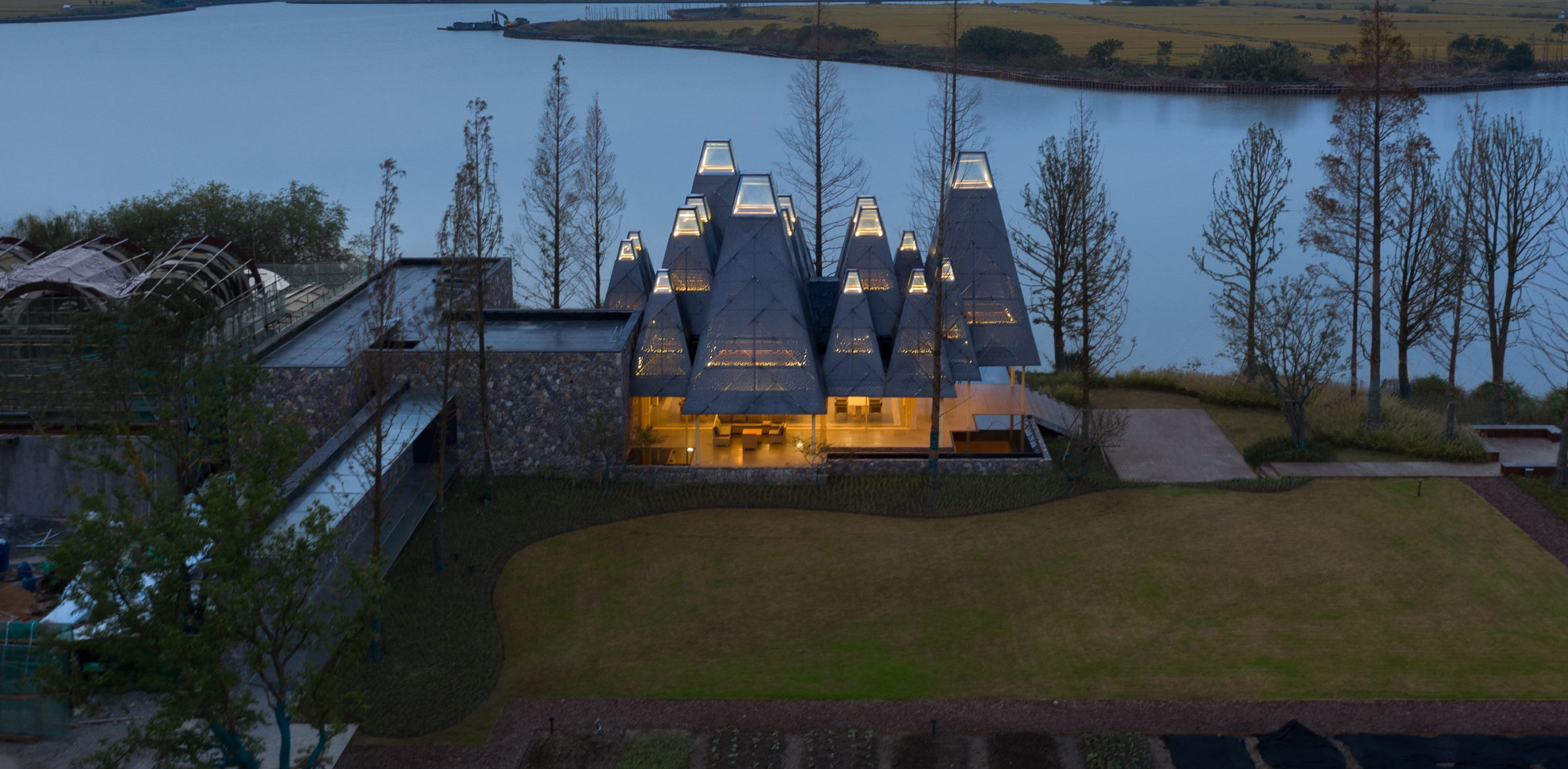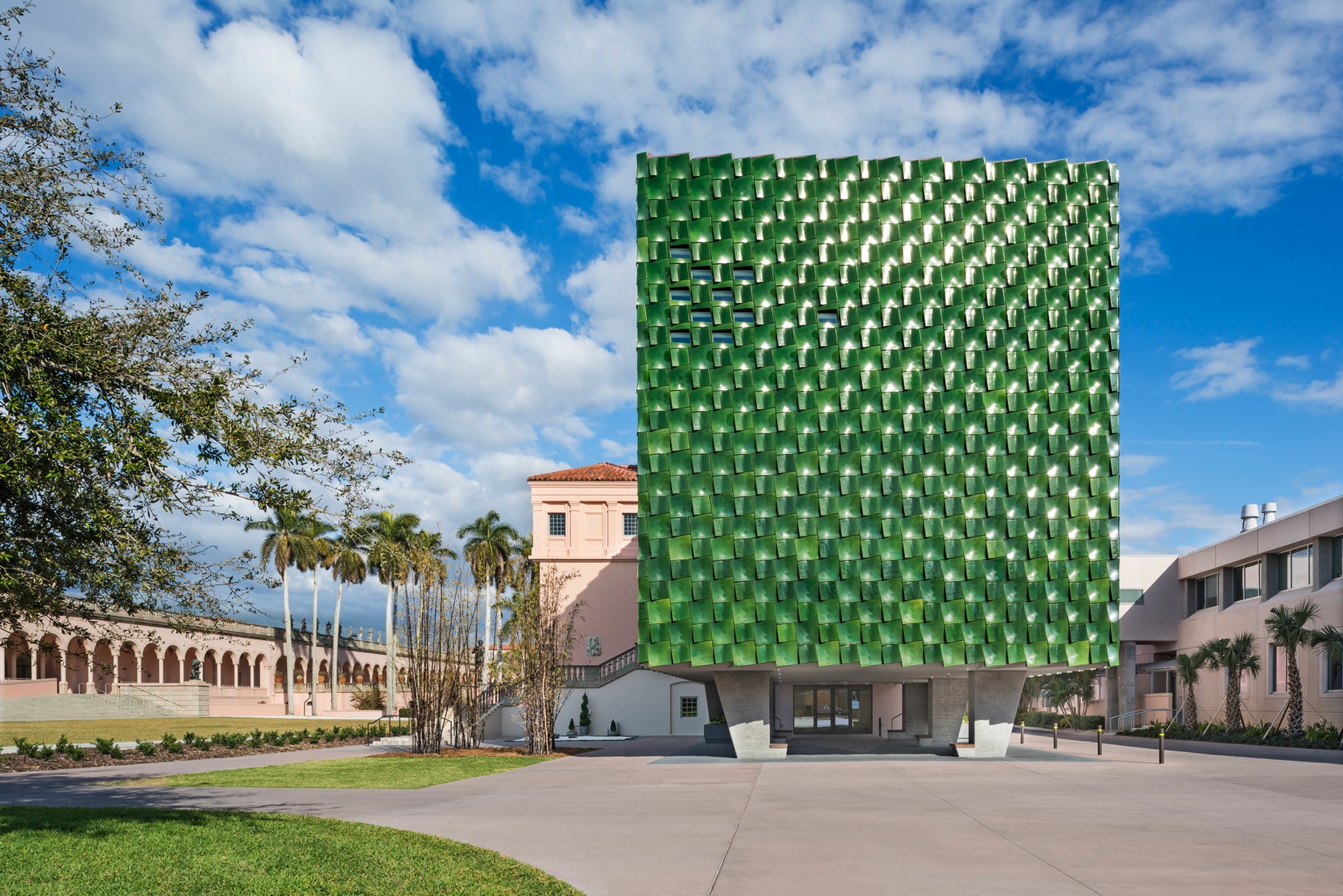Last chance: The 14th Architizer A+Awards celebrates architecture's new era of craft. Apply for publication online and in print by submitting your projects before the Final Entry Deadline on January 30th!
Amid a swampy plain in Suzhou, China, one can see a series of glowing pyramids peeking through a grove of metasequoia trees. (A native deciduous variety also known as dawn redwoods, the fast-growing trees are among the shorter in their genus, although no less beautiful with their pyramidal-shaped profiles.) The newly constructed Restaurant of Metasequoia Grove, designed by GOA (Group of Architects), draws inspiration from these plants to create an unusual building profile for the restaurant typology. The building is part of the Wujiang Beautiful Village plan that focuses on the rural revitalization of the surrounding Zhongjiadang area, which aims to encourage tourism and promote local culture. Inspired by the local flora, this restaurant and banquet hall is just the first step in this development.
The idea of the scheme is to make it a part of nature to heighten the dining experience for the user. “Water, sky and buildings constitute a background picture,” the team said. “The new restaurant will not only provide people with a place to enjoy the scenery, but it will also become a landscape embellished on the coastline.”
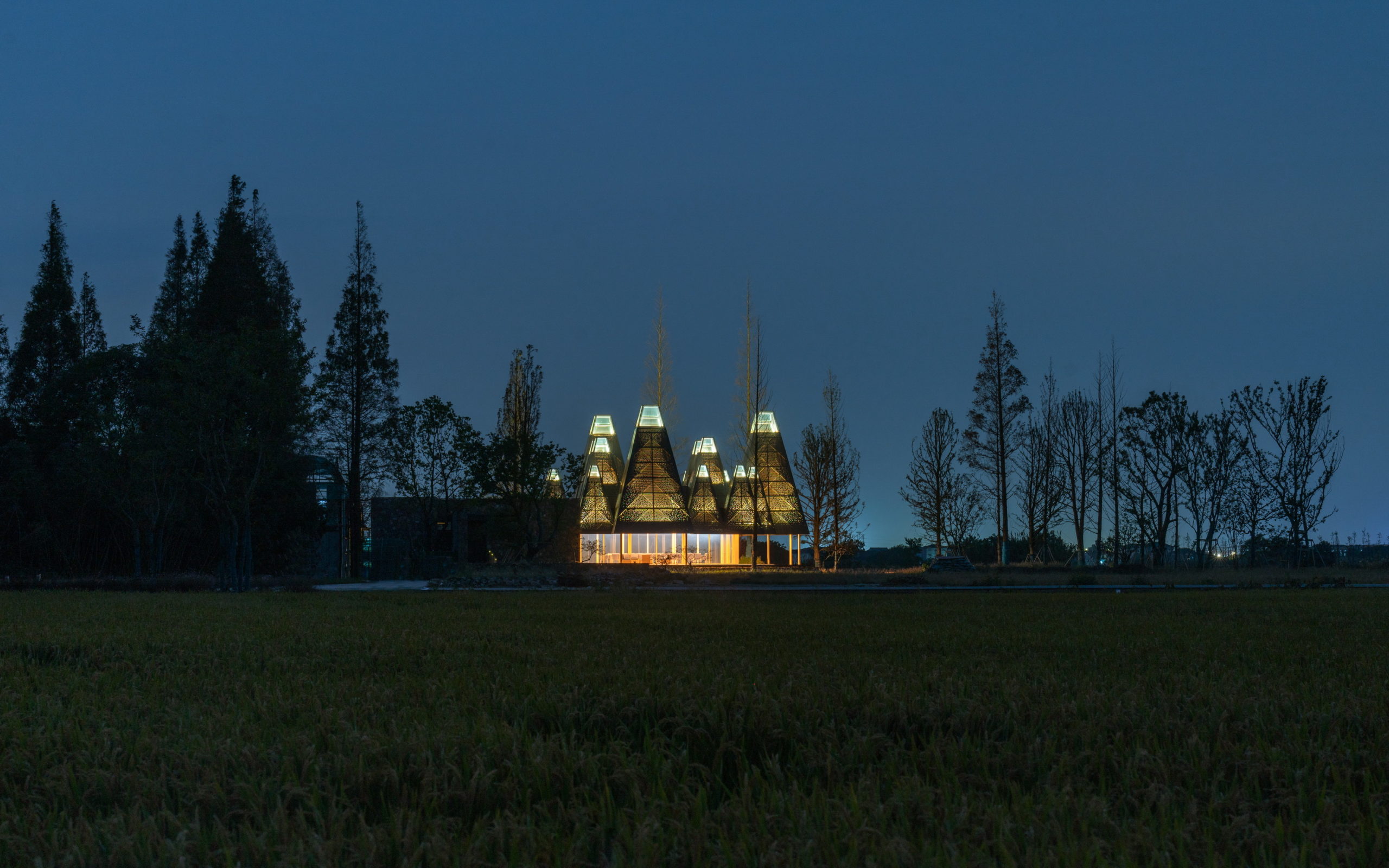
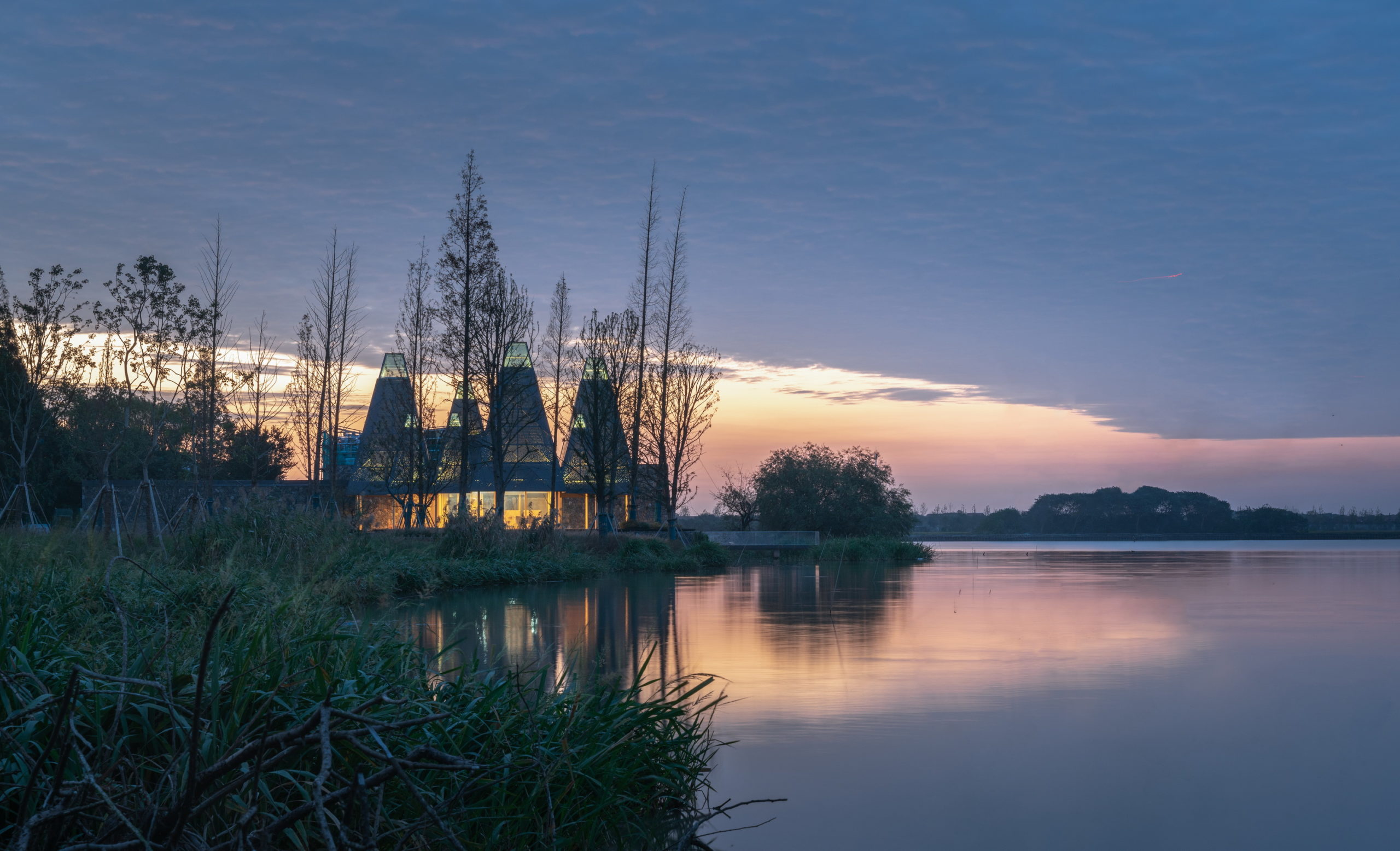
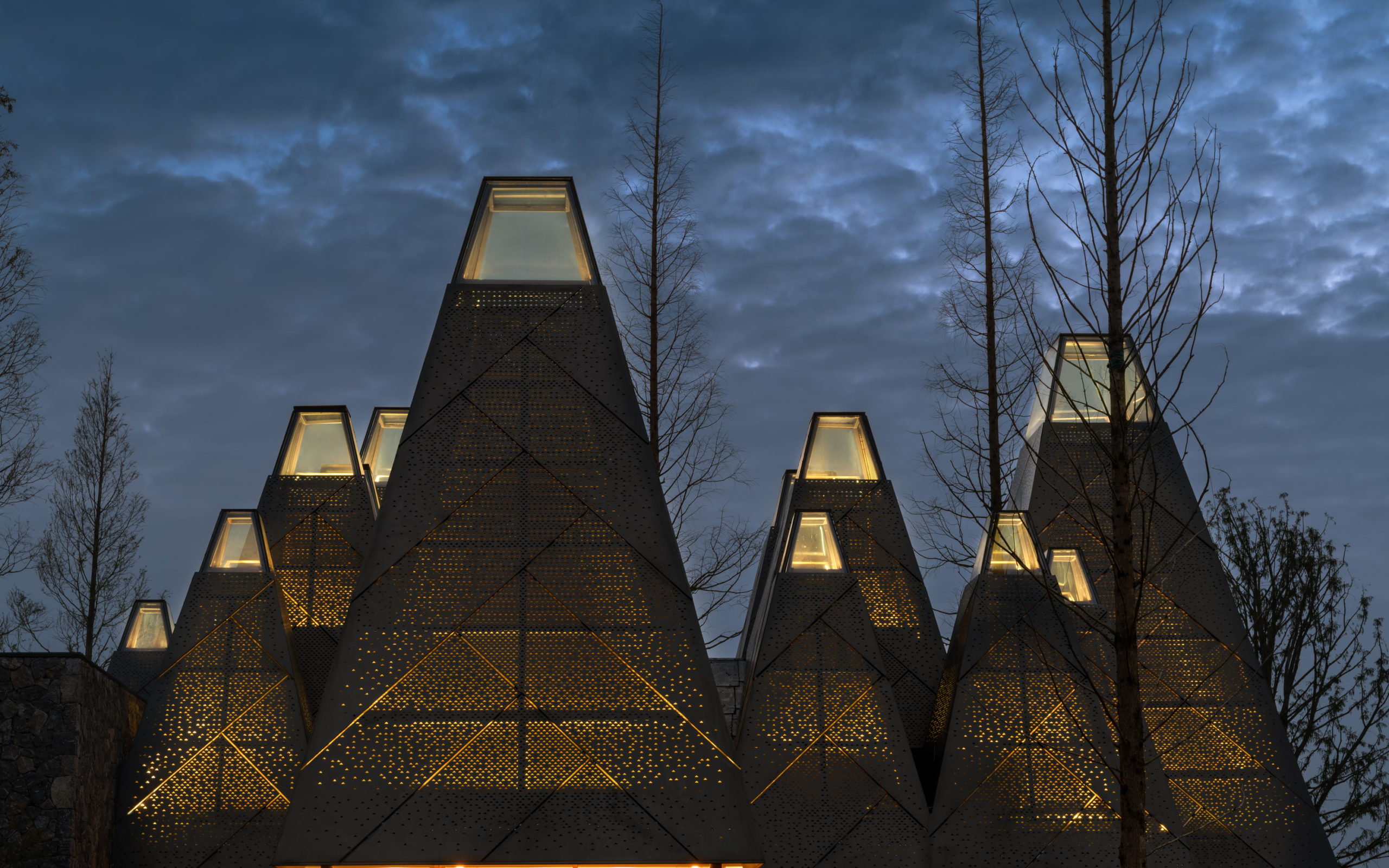
The nature-forward design of the restaurant takes a lot of inspiration from the site itself. The site’s northern edge is flanked by farmland and trees and the southern side is surrounded by water. The conical shapes of metasequoia trees around are abstracted into pyramids of different heights and widths to create something akin to a geometric forest. “Three different scales of modules mix and cluster together, forming a continuous canopy structure that traces an artificial forest profile within nature to simulate the natural substances’ generative process,” the firm said.
The total height of the roof canopy is just below forty feet. Each of the pyramidal forms is topped with a skylight to allow more natural light to enter the structure. The outer layer of these modules is covered in diagonal lines and a stippled pattern that recreates the texture of the metasequoia trees. Additionally, this perforated aluminum surface is layered with glass underneath and supported using grilled wood panels. This arrangement allows warm light to shine through the perforations during the night, much like a cluster of fireflies peeking through dense foliage. The contextual vision of this design has cemented its position in this year’s A+Awards gallery with both the Popular and Jury votes in the Restaurant category.
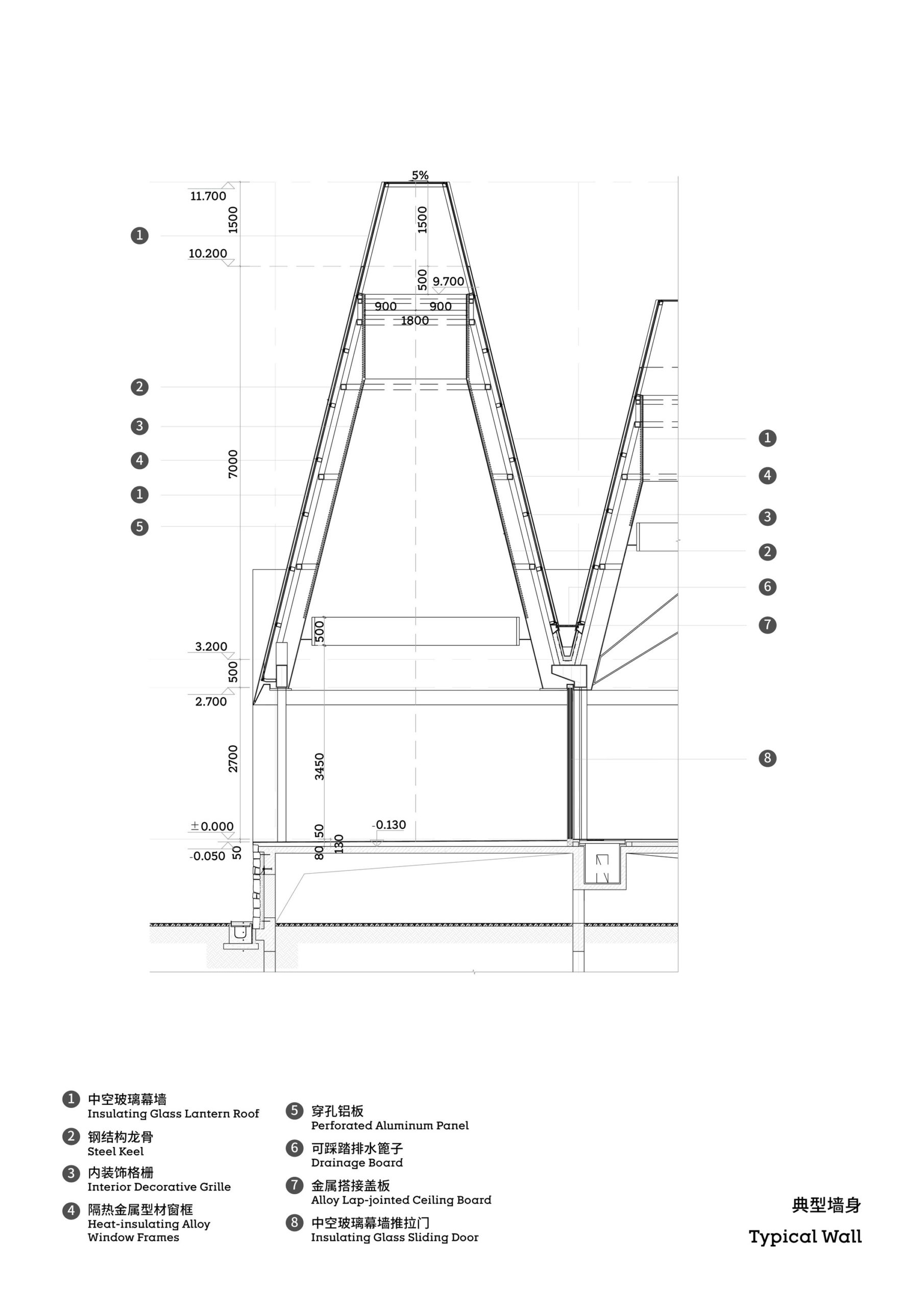
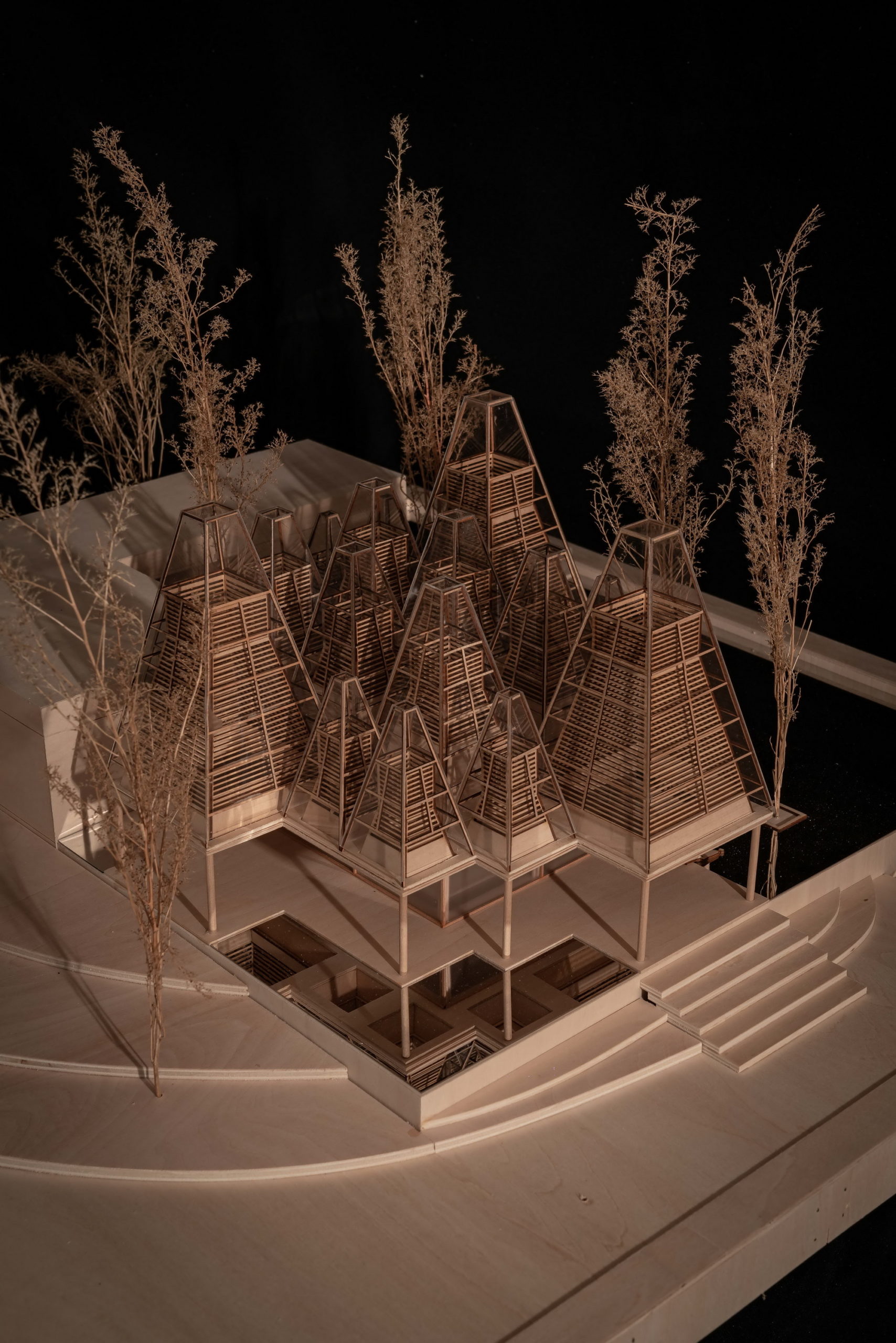
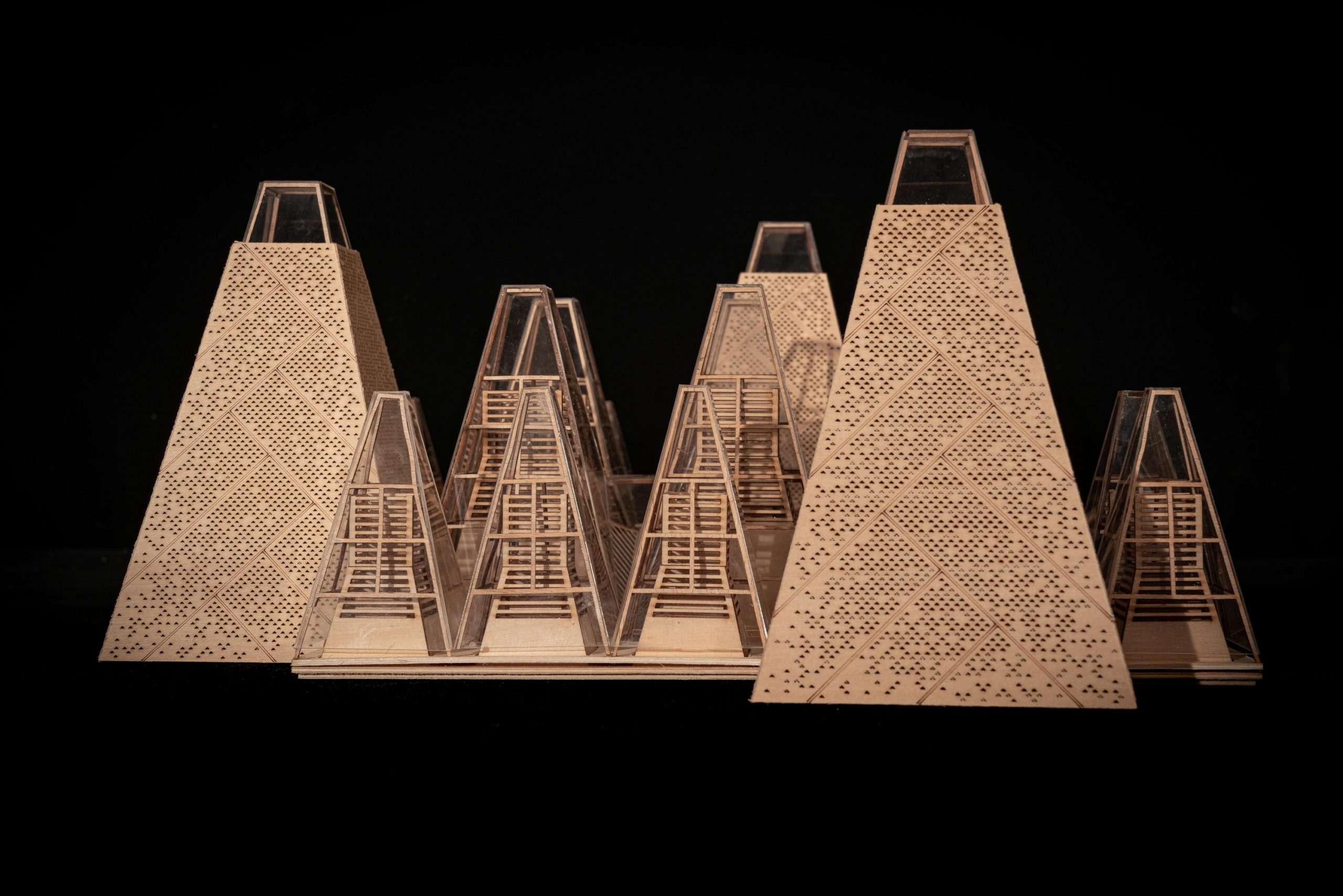 Despite the different heights on top, the lower end of the roof is evenly lowered by about nine feet to create a crisp frame of the view around. “Standing under the eaves and looking out, the vastness and tranquility of the plain wetlands seem to be included in the picture scroll,” GOA explained. The underside of the roof is also free of vents, which are in turn placed at the ground level along the glass windows, to create a disruption-free experience.
Despite the different heights on top, the lower end of the roof is evenly lowered by about nine feet to create a crisp frame of the view around. “Standing under the eaves and looking out, the vastness and tranquility of the plain wetlands seem to be included in the picture scroll,” GOA explained. The underside of the roof is also free of vents, which are in turn placed at the ground level along the glass windows, to create a disruption-free experience.
In order ensure maximum visual impact, GOA has used just ten load-bearing columns within the structure. These larger columns are combined with three slender columns. On the periphery, they have restricted the number of columns to just 11 to create unobstructed views of the water beyond. The team has used full-length single bay glass windows to envelop the main dining area.
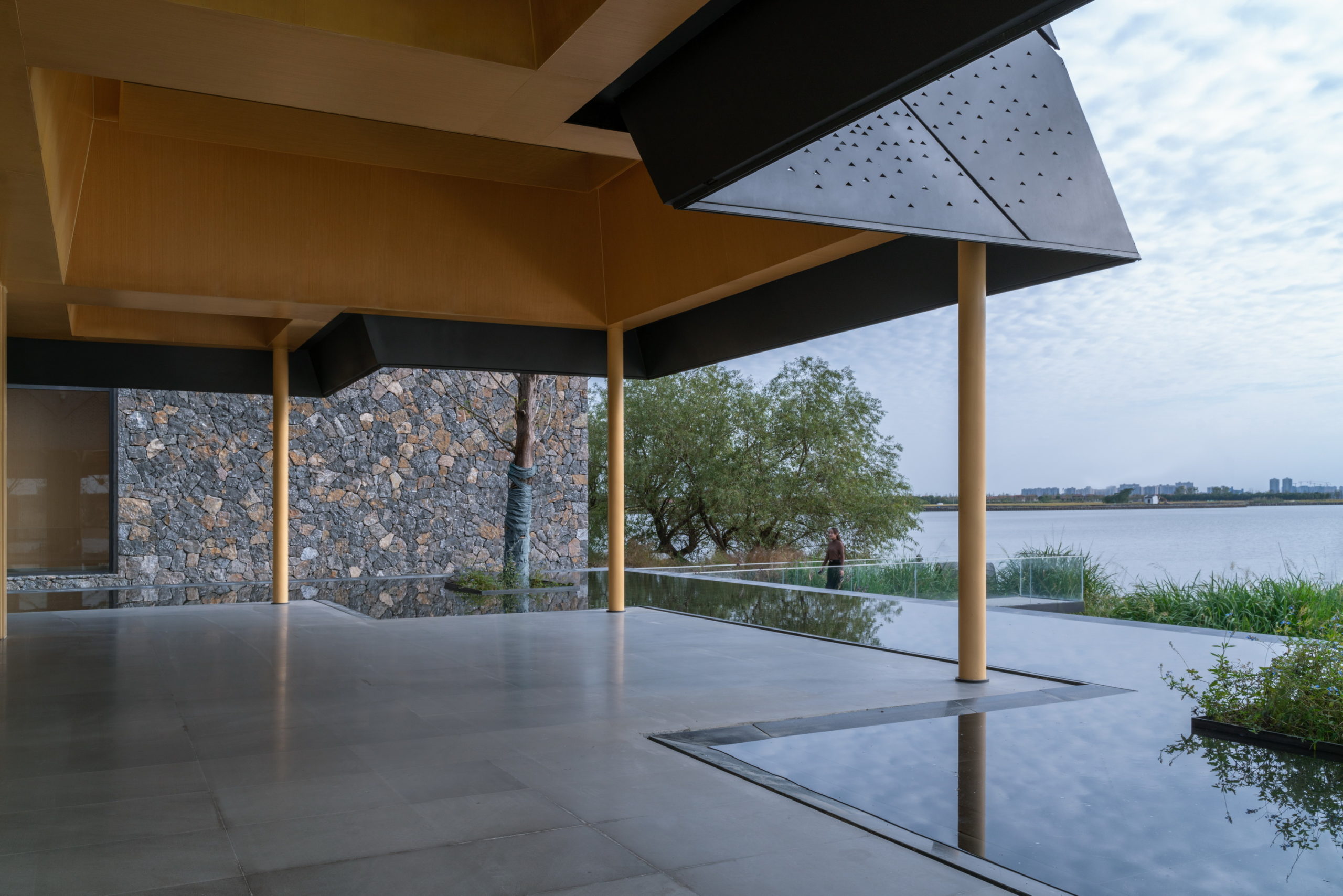
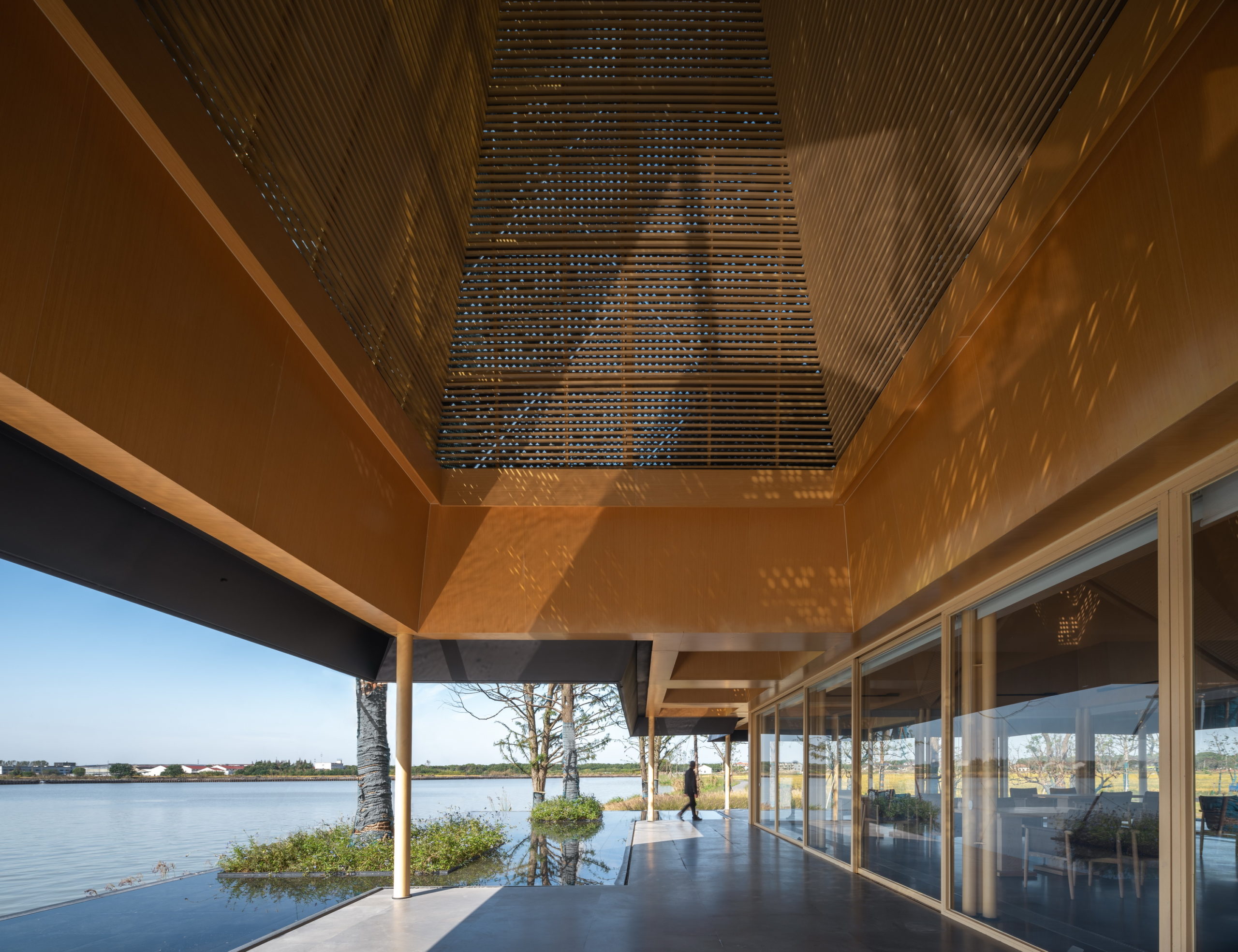
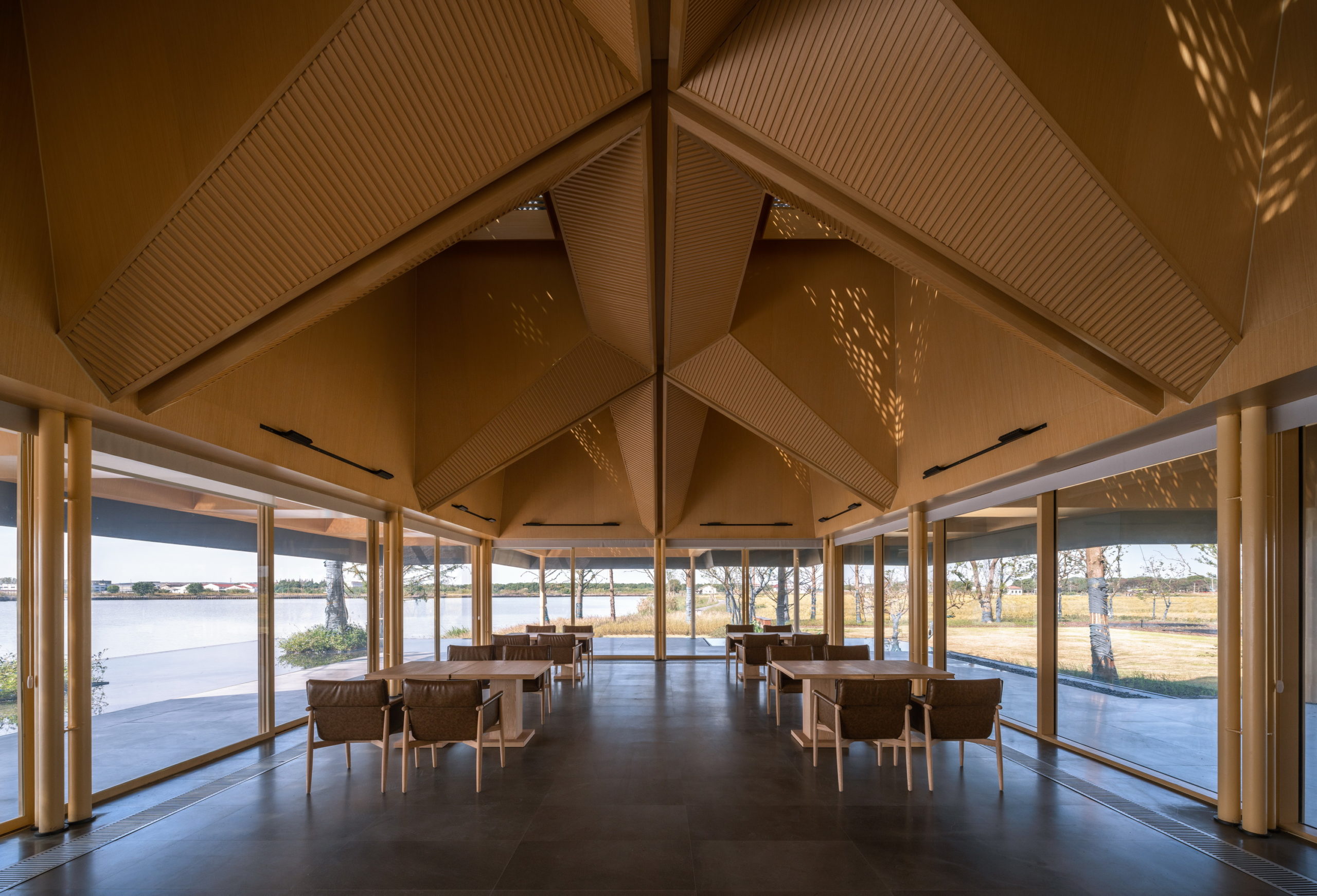 In addition to eliminating partition devices, the team has further blurred the boundaries between the structure and site around by using the same paving materials within the restaurant and the terrace that extends outwards. The terrace also includes a planned water body, closer to the natural water body, which creates a continuous line of vision when sitting inside.
In addition to eliminating partition devices, the team has further blurred the boundaries between the structure and site around by using the same paving materials within the restaurant and the terrace that extends outwards. The terrace also includes a planned water body, closer to the natural water body, which creates a continuous line of vision when sitting inside.
Understanding the interaction between architecture and its environment has always been a priority for GOA. They believe that architecture has the potential to redefine the way a location is perceived and can have a long-lasting impact on its growth and use. This restaurant design stays true to the firm’s idea of creating a landscape as opposed to a structure. Its true immersion into the site promises a tranquil sanctuary where visitors can disconnect and take in the mesmerizing waters and woods.
Last chance: The 14th Architizer A+Awards celebrates architecture's new era of craft. Apply for publication online and in print by submitting your projects before the Final Entry Deadline on January 30th!
